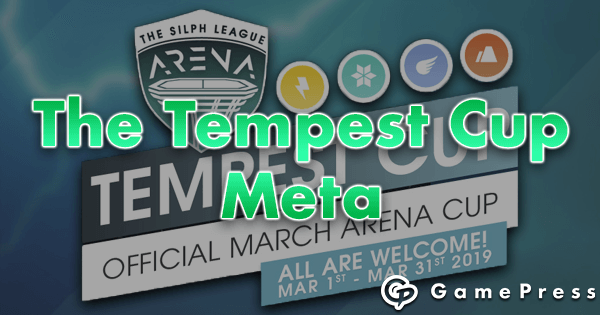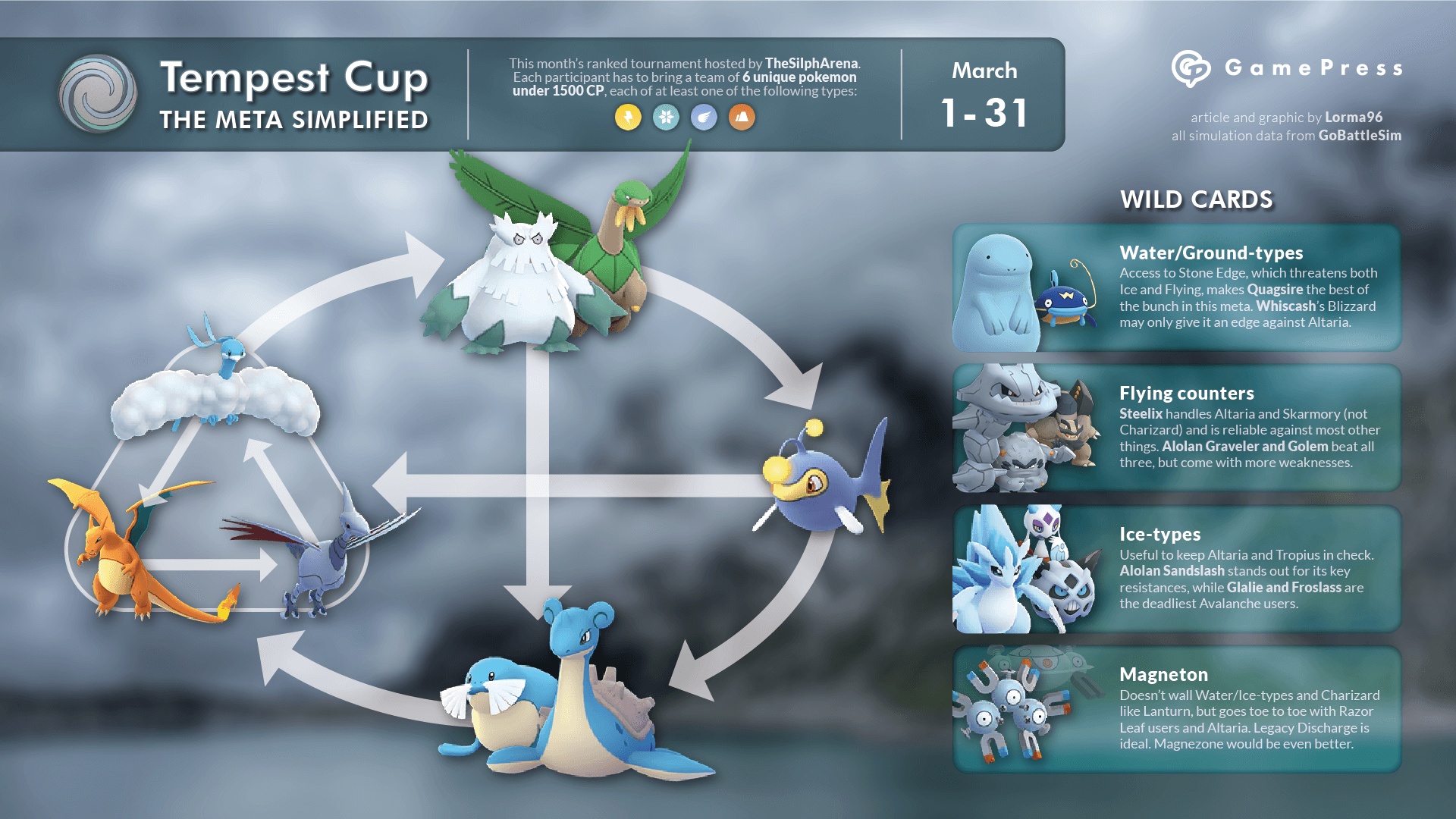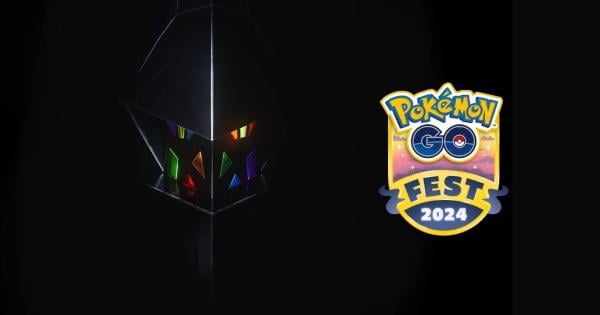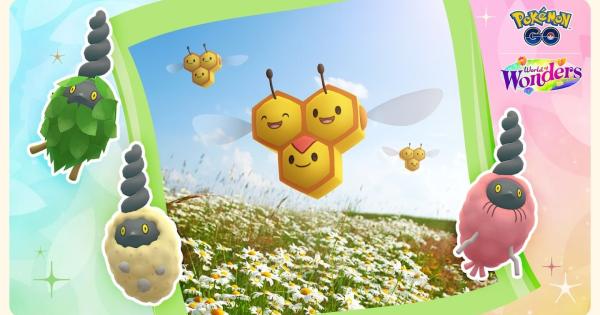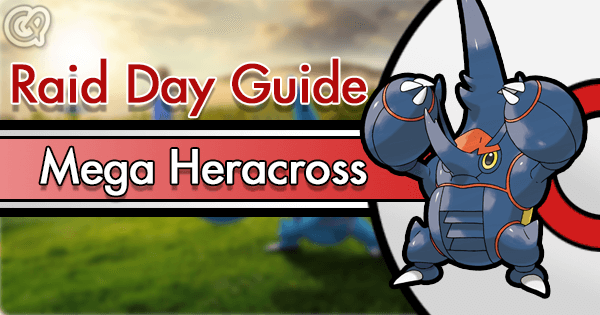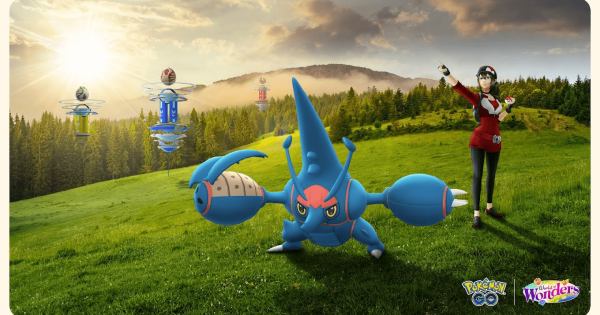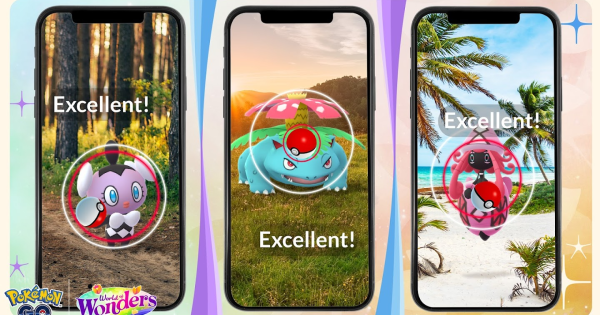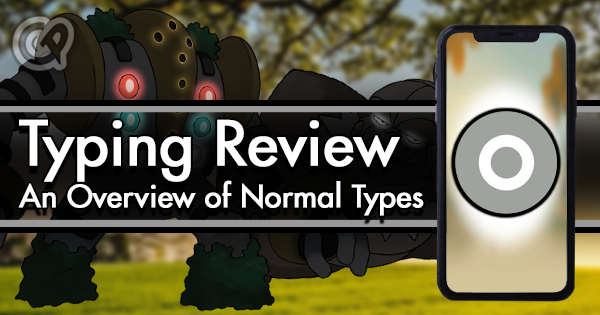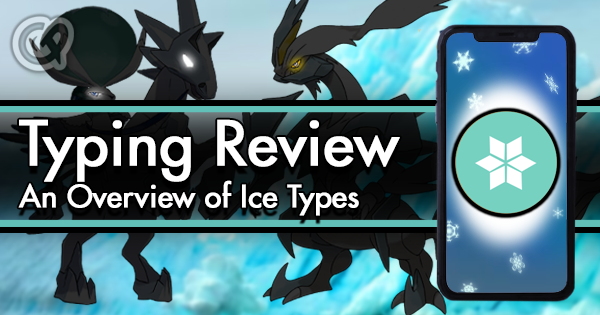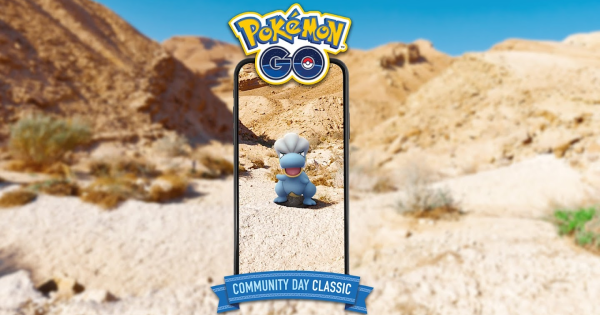Introduction
The Tempest Cup is the Silph Arena’s format for ranked tournaments during the month of March: each participant will have to bring a party of six unique pokémon under 1500 CP with the Flying, Ice, Electric or Ground typing. As usual, the metagame is quickly shaping up, and we at GamePress worked to analyze it through extensive simulations on GoBattleSim and first hand experience.
The Tempest meta is fundamentally different from last month’s Twilight, where with a few notable exceptions, the key matchups were all quite close and could be swayed one way or the other depending on shield and energy management. Here almost every big threat has an even bigger check that can make quick work of it, so switching should be used carefully, even completely avoided in some situations, and the outcome of a game will be greatly influenced by the teams of choice and the opening matchup.
Grass-Types
Let’s start our analysis from the group at the top of the graphic above. These are powerful mainly because of their devastating Razor Leaf, which destroys anything that’s weak to it and hurts very much even in neutral scenarios.
Razor Leaf + Aerial Ace and Leaf Blade
If you somehow have the elusive banana dinosaur in your inventory, investing in it for this cup would be almost mandatory. It’s one of the bulkiest pokemon in the Great League and its slow energy generation is offset by Leaf Blade and (to a lesser extent) Aerial Ace, two cheap charged moves. If you don’t want to invest 75 extra rare candies, the latter could also work alone: Tropius will considerably lose in speed, but Razor Leaf can often take care of its targets by itself while Aerial Ace offers coverage against other Grass-types and their main counters. The double weakness to Ice is definitely something to take into account, but as most Tempest Ice-types won’t resist Grass, Tropius will still at least severely weaken them with Razor Leaf as long as it has shields to hide behind.
Razor Leaf + Outrage
If you (understandably) don’t have a Tropius, Abomasnow is the other best Razor Leaf user with a few advantages of its own. The secondary Ice typing means that opposing Ice-types will be neutral against it, so the yeti won’t have much trouble against them and absolutely wreck those that are part Water-type. However, it’s far less tanky and slower with its charged moves than Tropius; in fact, you will most likely only need Outrage, as Energy Ball seldom performs better and Blizzard has a prohibitive energy cost.
The only other viable Razor Leaf user is Torterra, a definite downgrade from Tropius which loses to it, has the same double weakness, and slower charged moves.
Flying-Types
Despite their vulnerabilities, Flying-types will be a must in a competitive, balanced team. Altaria, Skarmory, and Charizard, in particular, will have key roles as the best hard counters to Razor Leaf users, thanks to their shared double resistance to Grass and solid performances against the field. Even bringing two of them in a party of six would be an interesting way to go. Interestingly, they also counter each other in a good old “rock-paper-scissors” scheme: it’s a meta within the meta!
Dragon Breath + Sky Attack and Dragon Pulse
When the Tempest Cup was announced, many wrote Altaria off due to its double weakness to Ice, despite being one of the best Great League pokémon overall. In reality, much like Azumarill in Twilight’s Poison-centric meta, the cloud duck is so strong that it shines even in an unfriendly environment. Its top tier bulk and the formidable combination of Dragon Breath and Sky Attack make it capable of dealing heavy damage even in unfavorable matchups and winning the neutral ones quite reliably. Dragon Pulse is preferred over Dazzling Gleam as the second charged move since it’s faster, it has STAB and the same type matchups: both are resisted by Steel, super effective on fellow Dragons, while Fighting and Dark are non-existent in this meta. Altaria performs at its best when shields are still up since it can’t afford to take any of the common Ice-type charged moves and Dragon Breath will hurt a lot even when the following charged move gets shielded.
Air Slash or Steel Wing + Sky Attack and Flash Cannon
Guess who’s back? The Skarmory you most likely invested in for the Boulder Cup, although it’s not as essential as it was back then. This time it’s a less flashy but less risky alternative to Altaria, as its Steel typing cancels out Flying’s weaknesses to Ice and Rock but adds one to Fire. It also makes it sturdy against both Altaria and its main counters, although it needs Air Slash to narrowly beat the former and Steel Wing to take care of Ice-types that aren’t part Water, so a choice will have to be made here. Air Slash will be generally preferred in neutral scenarios due to its faster energy generation.
Fire Spin + Blast Burn and Dragon Claw
If Altaria is the rock and Skarmory is the paper, then our scissors will be Charizard — if you were wise enough to evolve a low level one during Community Day, or if a friend is willing to trade you one with the exclusive move, that is. Blast Burn deletes Steel- and Ice-types and hits for huge chunks of damage even when resisted, while Dragon Claw offers a quicker alternative with the option to bait out shields, and more punch in the losing matchup against Altaria. However, Charizard’s problem lies in its offensive stat distribution, which makes it very squishy in the Great League: powerful fast moves like Water Gun or even Dragon Breath and pretty much any non-resisted charged move will be enough to severely weaken it.
Wing Attack or Bubble + Aerial Ace and Ice Beam
Mantine is the oddball of Tempest Flying-types, which might be worth considering if only for the surprise factor, as it’s generally not as strong as the three above. Its Water typing is a double-edged sword, as Razor Leaf will hurt it a lot more than it should and any Electric hit must be avoided, but Ice won’t be a big threat. Either fast move can be played with varying results. Wing Attack lets it actually beat Grass-types and go toe to toe (or wing to wing?) with Altaria and the Water/Ice-types listed below, while Bubble will be more effective on Skarmory, Charizard and Steelix. The recently added Bullet Seed seems like the least viable option, as it could be used to scare unsuspecting Water/Ground-types but doesn’t have enough damage output to finish them off anyway.
Togetic with interesting Hidden Power typing gets an honorable mention as a Flying-type surprise pick, with Ancient Power as the main charged move: apart from the Grass-types, Rock or Ice Hidden Power makes it able to beat Altaria and possibly Charizard, while Fire will hit Steel-types for heavy damage, and your opponent might have a tough time figuring it out.
Water/Ice-Types
As it so happens, the two top Tempest Ice-types carry a secondary Water typing. That helps them in matchups such with Fire- and Steel-types but also leaves them quite vulnerable to Grass (read: Razor Leaf) and Electric.
Ice Shard or Water Gun + Ice Beam and Surf OR Ice Shard + Dragon Pulse and Surf
The beloved Transport pokemon is among the most versatile and tanky options in this meta, although only legacy versions will be worth the investment — if you haven’t got them, try to trade for one! Lapras can come in three main different flavors and arguably, all of them are equally viable. With the full legacy set of Ice Shard and Ice Beam, it tears through Altaria and Tropius like no other, although the latter will hit back almost as hard with Razor Leaf. If you run the more accessible Water Gun, those two matchups will be much closer and mostly depend on shield usage, as Lapras will have to rely on Ice Beam for super effective damage; the ones against Steel- and Ice-types, on the other hand, will become more favorable. Lastly, the other legacy charged move of Dragon Pulse fares better against other Water-types, reliably wins the mirror match and can surprise the opponent, but it will need Ice Shard as a fast move to have any kind of Ice-type damage. Surf should always be the second charged move of choice, dealing solid damage for less energy than the legacy ones.
Powder Snow + Body Slam and Aurora Beam
Its force lies in the deadly, quick-fire moveset that spams unresisted damage on almost all the meta and makes it very suitable as a lead, much like Qwilfish in the Twilight Cup. Sealeo also has respectable bulk, making it capable of reliably beating Altaria with Powder Snow damage and going toe to toe with almost everything else including Tropius. It only truly fears Abomasnow and Electric-types. Water Pulse and Aurora Beam are both bad moves, but the latter can at least hit more meta-relevant targets.
Cloyster and legacy Dewgong (with Ice Shard and Icy Wind) are viable alternatives too, but they don’t offer any real advantages compared to the two above. Contrarily, Walrein functions very differently as it mainly relies on dealing heavy damage with Waterfall and will hardly make use of its costly charged moves. That makes it quite powerful against Skarmory and Charizard, as well as Steelix and fellow Ice-types, but pretty much dead weight in cases where Water is resisted such as Altaria and the Grass-types.
Electric-Types
As we mentioned, other than to Abomasnow, the Water/Ice-types are most vulnerable to Electric-types. The vast majority of teams will have to include at least one of them.
Water Gun + Thunderbolt and Hydro Pump
It’s one of the most powerful threats in the Tempest Cup meta, thanks to its high bulk with nice moves and coverage. The secondary Water typing makes Lapras and Sealeo unable to hurt it for decent unresisted damage (with Dragon Pulse being the only exception) while Thunderbolt deletes them. Lanturn is the best answer to Skarmory and Charizard too, with super effective moves and resistance to almost everything they can throw at it. However, it will almost always lose to Altaria and get absolutely destroyed by Razor Leaf users. Charge Beam improves those matchups by a little, but Water Gun’s damage output and coverage is generally preferred; as for charged moves, Hydro Pump is not essential but can be very useful against Ground-types or when shields are already down.
Thunder Shock or Spark + Discharge and Magnet Bomb
The other main Electric-type differs a lot in terms of role and matchups. Its low bulk is offset by a plethora of resistances, which means it’s quite vulnerable when confronted with neutral moves. So, unlike Lanturn, Magneton doesn’t wall the Water/Ice-types (the matchup against Lapras is quite even) or Charizard (which can kill it in only 7 fast moves but must be careful about Discharge); however, it can beat the Grass-types and Altaria, although with a very narrow margin. Having a legacy version with Discharge is quite important, while Spark is only slightly suboptimal compared to Thunder Shock. If you don’t have one of those, the good news is that if it gets released before your tournament, Magnezone will be arguably even better, with some extra durability and slower but heavier charged moves in Wild Charge and Flash Cannon.
Beyond these two stars, there are a few pure Electric-types worth looking at. Despite only being weak to Ground, they’re not as strong against the field and they all have quite similar matchups: negative against Altaria and Razor Leaf users, positive against Skarmory, neutral or slightly favorable against Charizard, Lanturn, Magneton and the Water/Ice-types. Raikou is probably the best of the bunch, but adding Shadow Ball for neutral coverage would be a hefty investment. Raichu and Manectric bring interesting coverage with Brick Break and Flame Burst respectively, while Minun offers a bit more bulk.
Ground-Types
The obvious consequence of Electric entering the meta is the rise of Ground-types. And as usual, our good friends from the Boulder Cup, the dual Water/Ground Pokemon are going to be the biggest players with their lone weakness to Grass — which this time around means that they must avoid Tropius and Abomasnow at all costs, and will have barely enough time to switch out when Razor Leaf starts decimating their health.
Mud Shot + Stone Edge and Earthquake
Almost completely ignored in the Boulder Cup for having slower charged moves compared to Whiscash and Marshtomp, now it’s Quagsire’s time to shine as the best mud boy. The key for its success is the coverage provided by Stone Edge, which really hurts both Ice- and Flying-types, and can still be fired quite often thanks to Mud Shot’s high energy generation. In fact, it can even use it right before fainting against Razor Leaf users, hitting both of them super effectively. However, since the fast move does barely any damage by itself, Quagsire is usually at its best when shields are already gone. Earthquake is its extra charged move of choice, with more relevant coverage than Sludge Bomb against Electric and Steel.
Mud Shot + Mud Bomb and Blizzard
The catfish trades Stone Edge’s high versatility for Blizzard’s OHKO potential on Altaria (and Tropius, if you somehow have one ready to go when that comes in) and Mud Bomb’s better consistency at dishing out Ground-type damage. The combination of the two also makes it one of the best at baiting shields, but Skarmory will still be a bigger problem for it than it is for Quagsire.
Marshtomp and Swampert, the other Water/Ground-types that were everywhere in Boulder, are still good here, but overshadowed by the two above due to Surf bringing less relevant coverage: with it they won’t ever be threatening to either Altaria, their Grass-types counters or Water/Ice pokemon. Among other Ground-types, none really stand out: despite having Stone Edge, Flygon is a bit too fragile for this meta and only really does well against Electric-types; Sandslash and Donphan also offer nice coverage with Rock Tomb and Counter respectively, but their potential is hindered by weaknesses to Water, Grass and Ice.
Alternative Flying Counters
Whether you don’t have a legacy Lapras or maybe you want your counters to Flying-types to not implode at the sight of Grass — and even if you just feel like your team needs some more coverage against those pesky birds gliding around — this last section is for you.
Dragon Tail + Earthquake and Crunch or Heavy Slam
This long boy is the swiss army knife of the Tempest Cup. In a meta of hard wins and losses, it’s one of the few Pokemon capable of having a good neutral matchup against most things, making it one of the safest switch-ins. It is still weak to Water, Fire and Ground, so it must be careful when Lapras, Charizard (on which it can still do decent neutral damage) or one of the Ground-types listed above is around. On the other hand, it can easily take on both Altaria and Skarmory, have a close match with both Razor Leaf users and beat Sealeo. With Earthquake it can also destroy the Electric-types or close a match, while Heavy Slam does well against pure Ice-types, although Crunch makes beating Skarmory a bit easier. Any combination of the three can really be viable, and that only adds to Steelix’s potential.
Rock Throw + Rock Blast and Thunderbolt
Rock Throw + Rock Blast and Wild Charge
With Rock probably being the type with the widest coverage in this cup, the only real Rock attackers in this cup make for some of the most interesting wild cards. They’re maybe the only things able to beat all three of Charizard, Skarmory and Altaria, and with good margin at that — the only exception being Steel Wing Skarmory, which still loses slightly but deals big super effective damage back. Their unique double resistance to Flying does help, as the usually fearsome Sky Attack barely tickles them. Despite their weaknesses, they also have close matches against Water/Ice-types and Magneton; against the Grass-types they will lose, but either make them waste a shield on Rock Blast, or bring them down to almost no health with it in the meanwhile. They are, however, hard countered by Lanturn and especially the Ground-types, which they’re doubly weak to and can’t hurt in any possible way.
Powder Snow + Blizzard and Bulldoze or Gyro Ball
While Alolan Ninetales enjoyed its time in the spotlight in the Twilight Cup, it’s now another Alolan to stand out as the best Ice attacker in the meta: the secondary Steel typing gives Sandslash key resistances to Grass, Flying, Dragon and Normal and a double resistance to Ice. That makes it able to withstand multiple hits from almost all of its targets and reliably one-shot them with Blizzard, which is viable in this case thanks to Powder Snow and its swift energy generation, and makes Sandslash a perfect fit as a closer. Bulldoze and Gyro Ball are both quite terrible, but can be useful to bait shields when those are still up, or as coverage against Steel- or Electric-types and Ice-types respectively. The downsides of its typing are the double weaknesses to Fire and Fighting, and although those are effectively limited to Charizard and Raichu, that’s something to always take into consideration.
Ice Shard + Avalanche and Shadow Ball
Powder Snow + Avalanche and Shadow Ball
Both evolutions of Snorunt make the list as the best Avalanche users in the Tempest Cup. They only differ in stat distribution (Glalie is tankier), typing (Froslass’ Ghost-type makes it easily beat Sealeo with its double resistance to Body Slam) and quick moves. Ice Shard hits a lot harder while Powder Snow charges energy faster, which makes Glalie perform better with shields up while Froslass works more as a closer. They also share Shadow Ball as the secondary charged move, giving them the option of a heavy neutral hit on almost anything.
Although these three would be our recommended picks for a Tempest Ice-type, there are other alternatives to consider. Piloswine and Mamoswine both learn the deadly Avalanche as well, but their low bulk and terrible typing (with weaknesses to Water, Grass, Fire and Steel) makes them a lot more risky in most scenarios. Alolan Ninetales works as a hard Altaria counter with its immunity tier resistance to Dragon Breath, but is less reliable than Sandslash against a Tropius that is willing to use its shields.

